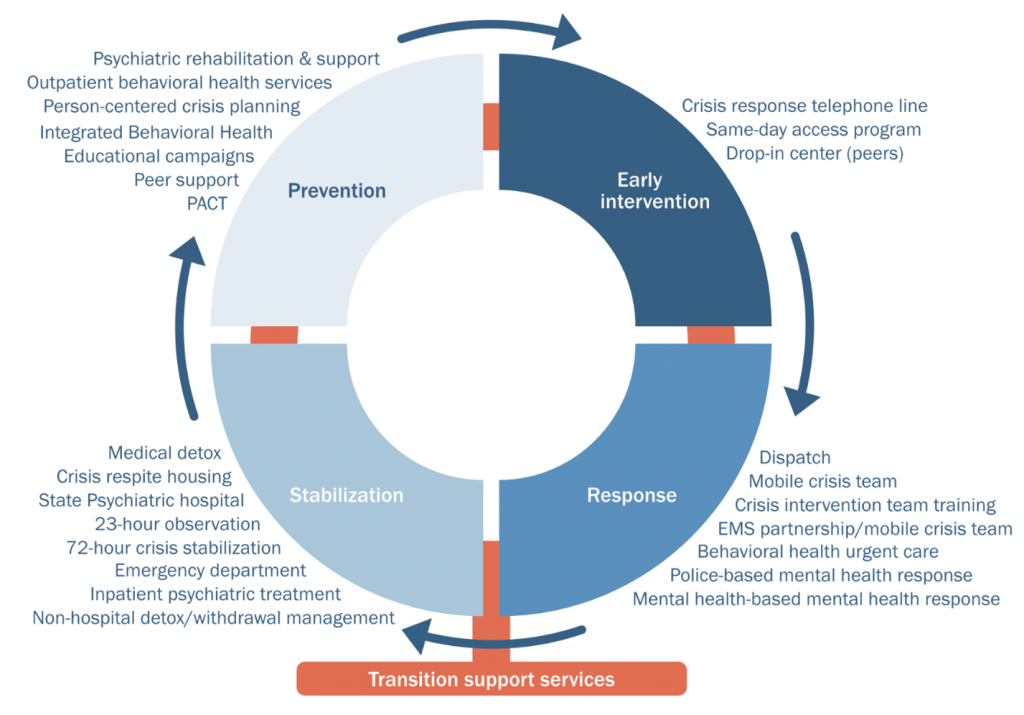JG is working with the Addiction and Mental Disorders Division (AMDD) of the Montana Department of Public Health and Human Services (DPHHS), as well as the Montana Health Care Foundation, to support crisis system redesign projects currently taking place in seven Montana counties (Gallatin, Missoula, Ravalli, Silver Bow, Yellowstone, Lewis and Clark, and Flathead). JG is leading data collection and analysis to understand current capacity of each community’s behavioral health crisis system and to identify where the system is being overloaded and what gaps exist in behavioral health crisis services.
The goal of the project is to develop an understanding of relative demand placed on different crisis resources across the behavioral health crisis continuum within each county in order to help determine feasible adjustments to move towards the ideal crisis system. An ideal crisis system provides the appropriate services to an individual in crisis in an efficient and timely manner, where the basic goals of the system are:
- Coordinate all crisis services by generating effective transition support services and establishing a “no wrong door” policy
- Conduct formal assessments for an individual in crisis
- Ensure that actors within the crisis response system can guide an individual to the appropriate service at any point along the crisis pathway
- Ensure that an individual never ends a crisis without referrals or additional treatment
Behavioral health crisis continuum

Reports for each of the seven counties are written using data collected from emergency departments, EMS, dispatch, mental health providers, federally qualified health centers, crisis call lines, the state hospital, Medicaid, and law enforcement. The reports separate the crisis response system into four stages of the continuum: prevention, early intervention, response, and stabilization; each stage is linked by transition support services, such as warm hand-offs and care coordination. We analyze resources within each stage to identify potential gaps, breaking each stage down further by three types of behavioral health crises: substance use, mental illness, and suicide and self-harm.
The first four reports, for Gallatin, Missoula, Ravalli, and Lewis and Clark counties are complete, and the report for Lewis and Clark County can be found here as a part of this summary by the Montana chapter of the National Alliance on Mental Illness (NAMI).